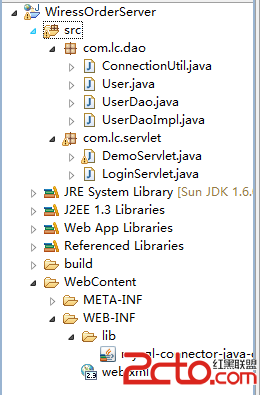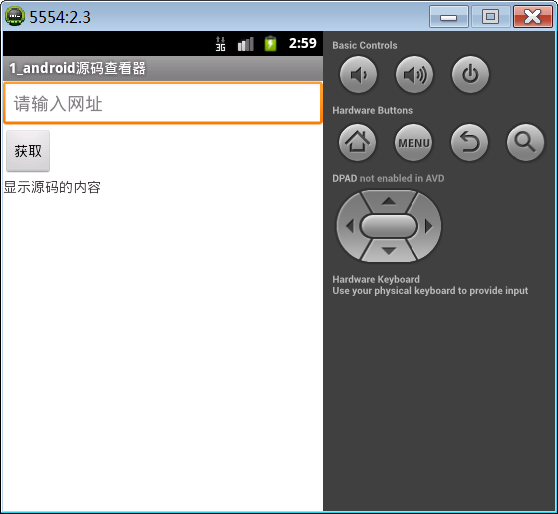編輯:關於Android編程
今天學習”android中的撥號流程”,大部分情況,用戶是通過dialer輸入號碼,撥號通話的,那麼就從dialer開始吧。
DialpadFragment是撥打電話界面,當點擊撥打電話按鈕會回調其onClick方法:
public void onClick(View view) {
switch (view.getId()) {
case R.id.dialpad_floating_action_button:
view.performHapticFeedback(HapticFeedbackConstants.VIRTUAL_KEY);
handleDialButtonPressed();
break;
....
}
}
handleDialButtonPress方法中,主要代碼如下:
private void handleDialButtonPressed() {
....
final Intent intent = CallUtil.getCallIntent(number);
if (!isDigitsShown) {
// must be dial conference add extra
intent.putExtra(EXTRA_DIAL_CONFERENCE_URI, true);
}
intent.putExtra(ADD_PARTICIPANT_KEY, mAddParticipant && isPhoneInUse());
DialerUtils.startActivityWithErrorToast(getActivity(), intent);
hideAndClearDialpad(false);
....
}
可以看到這裡構造了一個intent,並且啟動了該intent對應的activity
public static Intent getCallIntent(String number) {
return getCallIntent(getCallUri(number));
}
public static Intent getCallIntent(Uri uri) {
return new Intent(Intent.ACTION_CALL, uri);
}
Intent.ACTION_CALL這樣的action對應的是/packages/services/Telephony模塊中的OutgoingCallBroadcaster類,該類是一個activity
此時程序進入了OutgoingCallBroadcaster類
@Override
protected void onCreate(Bundle icicle) {
super.onCreate(icicle);
setContentView(R.layout.outgoing_call_broadcaster);
....
// 調用processIntent處理傳遞過來的intent
processIntent(intent);
....
}
processIntent方法主要處理下面三種action
CALL (action for usual outgoing voice calls)CALL_PRIVILEGED (can come from built-in apps like contacts / voice dialer / bluetooth)CALL_EMERGENCY (from the EmergencyDialer that’s reachable from the lockscreen.)對於數據為tel: URI的電話處理流程為:OutgoingCallReceiver -> SipCallOptionHandler ->InCallScreen.對於數據為sip: URI的網絡電話,則跳過NEW_OUTGOING_CALL廣播,直接調用SipCallOptionHandler ->InCallScreen對於數據為voicemail: URIs的語音信箱處理同電話處理流程類似
private void processIntent(Intent intent) {
final Configuration configuration = getResources().getConfiguration();
// 如果當前設備不具有語音通信能力,則直接返回
if (!PhoneGlobals.sVoiceCapable) {
handleNonVoiceCapable(intent);
return;
}
String action = intent.getAction();
String number = PhoneNumberUtils.getNumberFromIntent(intent, this);
// Check the number, don't convert for sip uri
if (number != null) {
if (!PhoneNumberUtils.isUriNumber(number)) {
number = PhoneNumberUtils.convertKeypadLettersToDigits(number);
number = PhoneNumberUtils.stripSeparators(number);
}
} else {
Log.w(TAG, "The number obtained from Intent is null.");
}
// 下面代碼獲取調用Intent.ACTION_CALL所在包,檢查當前包是否具有撥打電話的權限
AppOpsManager appOps = (AppOpsManager)getSystemService(Context.APP_OPS_SERVICE);
int launchedFromUid;
String launchedFromPackage;
try {
// 獲取啟動"ACTION_CALL"的uid和package
launchedFromUid = ActivityManagerNative.getDefault().getLaunchedFromUid(
getActivityToken());
launchedFromPackage = ActivityManagerNative.getDefault().getLaunchedFromPackage(
getActivityToken());
} catch (RemoteException e) {
launchedFromUid = -1;
launchedFromPackage = null;
}
// 若當前UID和所在的package不具有"OP_CALL_PHONE"權限,則直接返回
if (appOps.noteOpNoThrow(AppOpsManager.OP_CALL_PHONE, launchedFromUid, launchedFromPackage)
!= AppOpsManager.MODE_ALLOWED) {
Log.w(TAG, "Rejecting call from uid " + launchedFromUid + " package "
+ launchedFromPackage);
finish();
return;
}
// 如果callNow是true,表示當前是一個類似於緊急撥號的特殊通話,此時直接開啟通話,就不會走NEW_OUTGOING_CALL
boolean callNow;
// 對於緊急號碼和非緊急號碼設置不同的action
final boolean isExactEmergencyNumber =
(number != null) && PhoneNumberUtils.isLocalEmergencyNumber(this, number);
final boolean isPotentialEmergencyNumber =
(number != null) && PhoneNumberUtils.isPotentialLocalEmergencyNumber(this, number);
if (Intent.ACTION_CALL_PRIVILEGED.equals(action)) {
if (isPotentialEmergencyNumber) {
action = Intent.ACTION_CALL_EMERGENCY;
} else {
action = Intent.ACTION_CALL;
}
intent.setAction(action);
}
// 當用戶輸入的號碼為空的時候,intent.getBooleanExtra(EXTRA_SEND_EMPTY_FLASH, false) == true
if (intent.getBooleanExtra(EXTRA_SEND_EMPTY_FLASH, false)) {
PhoneUtils.sendEmptyFlash(PhoneGlobals.getPhone());
finish();
return;
} else {
callNow = true;
}
....
if (callNow) {
// 如果是緊急號碼或者輸入的號碼合法,則直接跳轉到InCallScreen界面
PhoneGlobals.getInstance().callController.placeCall(intent);
}
// 構造一個"ACTION_NEW_OUTGOING_CALL" intent
Intent broadcastIntent = new Intent(Intent.ACTION_NEW_OUTGOING_CALL);
if (number != null) {
broadcastIntent.putExtra(Intent.EXTRA_PHONE_NUMBER, number);
}
CallGatewayManager.checkAndCopyPhoneProviderExtras(intent, broadcastIntent);
broadcastIntent.putExtra(EXTRA_ALREADY_CALLED, callNow);
broadcastIntent.putExtra(EXTRA_ORIGINAL_URI, uri.toString());
broadcastIntent.addFlags(Intent.FLAG_RECEIVER_FOREGROUND);
// 發送一個打電話超時的message
mHandler.sendEmptyMessageDelayed(EVENT_OUTGOING_CALL_TIMEOUT,
OUTGOING_CALL_TIMEOUT_THRESHOLD);
// 主要會發送根據構造出的intent,發送一個有序廣播,並且在OutgoingCallReceiver中處理
sendOrderedBroadcastAsUser(broadcastIntent, UserHandle.OWNER,
android.Manifest.permission.PROCESS_OUTGOING_CALLS,
AppOpsManager.OP_PROCESS_OUTGOING_CALLS,
new OutgoingCallReceiver(),
null, // scheduler
Activity.RESULT_OK, // initialCode
number, // initialData: initial value for the result data
null); // initialExtras
}
public void placeCall(Intent intent) {
....
if (!(Intent.ACTION_CALL.equals(action)
|| Intent.ACTION_CALL_EMERGENCY.equals(action)
|| Intent.ACTION_CALL_PRIVILEGED.equals(action))) {
Log.wtf(TAG, "placeCall: unexpected intent action " + action);
throw new IllegalArgumentException("Unexpected action: " + action);
}
// Check to see if this is an OTASP call (the "activation" call
// used to provision CDMA devices), and if so, do some
// OTASP-specific setup.
Phone phone = mApp.mCM.getDefaultPhone();
if (TelephonyCapabilities.supportsOtasp(phone)) {
checkForOtaspCall(intent);
}
mApp.setRestoreMuteOnInCallResume(false);
CallStatusCode status = placeCallInternal(intent);
switch (status) {
// Call was placed successfully:
case SUCCESS:
case EXITED_ECM:
if (DBG) log("==> placeCall(): success from placeCallInternal(): " + status);
break;
default:
log("==> placeCall(): failure code from placeCallInternal(): " + status);
handleOutgoingCallError(status);
break;
}
// 最終無論如何都會顯示InCallScreen,並且根據當前錯誤碼狀態顯示指定的錯誤提示信息
}
private CallStatusCode placeCallInternal(Intent intent) {
....
int callStatus = PhoneUtils.placeCall(mApp,
phone,
number,
contactUri,
(isEmergencyNumber || isEmergencyIntent),
rawGatewayInfo,
mCallGatewayManager);
....
}
public static int placeCall(Context context, Phone phone, String number, Uri contactRef,
boolean isEmergencyCall, RawGatewayInfo gatewayInfo, CallGatewayManager callGateway) {
....
int status = CALL_STATUS_DIALED;
try {
// 和RIL建立連接,mCM是PhoneGlobals的屬性同時是CallManager類型
connection = app.mCM.dial(phone, numberToDial, VideoProfile.STATE_AUDIO_ONLY);
} catch (CallStateException ex) {
return CALL_STATUS_FAILED;
}
if (null == connection) {
status = CALL_STATUS_FAILED;
}
//
startGetCallerInfo(context, connection, null, null, gatewayInfo);
// 設置音頻相關
setAudioMode();
final boolean speakerActivated = activateSpeakerIfDocked(phone);
final BluetoothManager btManager = app.getBluetoothManager();
if (initiallyIdle && !speakerActivated && isSpeakerOn(app)
&& !btManager.isBluetoothHeadsetAudioOn()) {
PhoneUtils.turnOnSpeaker(app, false, true);
}
....
return status;
}
public Connection dial(Phone phone, String dialString, int videoState)
throws CallStateException {
Phone basePhone = getPhoneBase(phone);
int subId = phone.getSubId();
Connection result;
// 檢查當前手機狀態是否可以撥打電話
if (!canDial(phone)) {
String newDialString = PhoneNumberUtils.stripSeparators(dialString);
if (basePhone.handleInCallMmiCommands(newDialString)) {
return null;
} else {
throw new CallStateException("cannot dial in current state");
}
}
result = basePhone.dial(dialString, videoState);
return result;
}
basePhone是一個phone對象,大部分情況是Phone的一個代理類PhoneProxy,然後根據PhoneProxy的mActivePhone判斷具體是那個Phone的子類的實現,有可能是下面類型:
com/android/internal/telephony/gsm/GSMPhone.java com.android.internal.telephony.cdma.CDMAPhone com.android.internal.telephony.sip.SipPhone ....
private static Phone getPhoneBase(Phone phone) {
if (phone instanceof PhoneProxy) {
return phone.getForegroundCall().getPhone();
}
return phone;
}
@Override
public Connection
dial(String dialString, int videoState) throws CallStateException {
return dial(dialString, null, videoState, null);
}
@Override
public Connection
dial (String dialString, UUSInfo uusInfo, int videoState, Bundle intentExtras)
throws CallStateException {
....
return dialInternal(dialString, null, VideoProfile.STATE_AUDIO_ONLY, intentExtras);
}
@Override
protected Connection
dialInternal (String dialString, UUSInfo uusInfo, int videoState, Bundle intentExtras)
throws CallStateException {
// Need to make sure dialString gets parsed properly
String newDialString = PhoneNumberUtils.stripSeparators(dialString);
// handle in-call MMI first if applicable
if (handleInCallMmiCommands(newDialString)) {
return null;
}
// Only look at the Network portion for mmi
String networkPortion = PhoneNumberUtils.extractNetworkPortionAlt(newDialString);
GsmMmiCode mmi =
GsmMmiCode.newFromDialString(networkPortion, this, mUiccApplication.get());
// mCT是GsmCallTracker類對象,這裡調用GsmCallTracker#dial
if (mmi == null) {
return mCT.dial(newDialString, uusInfo, intentExtras);
} else if (mmi.isTemporaryModeCLIR()) {
return mCT.dial(mmi.mDialingNumber, mmi.getCLIRMode(), uusInfo, intentExtras);
} else {
mPendingMMIs.add(mmi);
mMmiRegistrants.notifyRegistrants(new AsyncResult(null, mmi, null));
mmi.processCode();
return null;
}
}
synchronized Connection
dial (String dialString, int clirMode, UUSInfo uusInfo, Bundle intentExtras)
throws CallStateException {
....
if ( mPendingMO.getAddress() == null || mPendingMO.getAddress().length() == 0
|| mPendingMO.getAddress().indexOf(PhoneNumberUtils.WILD) >= 0
) {
// 無效的號碼
pollCallsWhenSafe();
} else {
// Always unmute when initiating a new call
setMute(false);
// mCi是CommandsInterface接口,其具體的實現類是com.android.internal.telephony.RIL
mCi.dial(mPendingMO.getAddress(), clirMode, uusInfo, obtainCompleteMessage());
}
....
}
public void
dial(String address, int clirMode, UUSInfo uusInfo, Message result) {
RILRequest rr = RILRequest.obtain(RIL_REQUEST_DIAL, result);
rr.mParcel.writeString(address);
rr.mParcel.writeInt(clirMode);
if (uusInfo == null) {
rr.mParcel.writeInt(0); // UUS information is absent
} else {
rr.mParcel.writeInt(1); // UUS information is present
rr.mParcel.writeInt(uusInfo.getType());
rr.mParcel.writeInt(uusInfo.getDcs());
rr.mParcel.writeByteArray(uusInfo.getUserData());
}
if (RILJ_LOGD) riljLog(rr.serialString() + "> " + requestToString(rr.mRequest));
send(rr);
}
可以看到,最終也是通過send方法發送”EVENT_SEND”消息,給到自己處理,厲害了,天啦魯,居然和短信的發送走到同一條路上,然後就是交給modem去具體操作了。
1. com.android.dialer.dialpad.DialpadFragment#onClick 2. com.android.dialer.dialpad.DialpadFragment#handleDialButtonPressed 3. com.android.phone.OutgoingCallBroadcaster#processIntent 4. com.android.phone.CallController#placeCall 5. com.android.phone.CallController#placeCallInternal 6. com.android.phone.PhoneUtils#placeCall(android.content.Context, com.android.internal.telephony.Phone, java.lang.String, android.net.Uri, boolean, com.android.phone.CallGatewayManager.RawGatewayInfo, com.android.phone.CallGatewayManager) 7. com.android.internal.telephony.CallManager#dial(com.android.internal.telephony.Phone, java.lang.String, int) 8. com.android.internal.telephony.PhoneProxy#dial(java.lang.String, int) 9. 以GSMPhone為例 com.android.internal.telephony.gsm.GSMPhone#dialInternal 10.com.android.internal.telephony.RIL#dial(java.lang.String, int, com.android.internal.telephony.UUSInfo, android.os.Message) 11.com.android.internal.telephony.RIL#send 發送msg = mSender.obtainMessage(EVENT_SEND, rr);這樣的message給到RILSender處理
 Android項目之無線點餐(2)--用戶登錄的客戶端和服務器端實現
Android項目之無線點餐(2)--用戶登錄的客戶端和服務器端實現
一、服務器端實現 (1)創建動態服務器項目 個部分代碼如下: package com.lc.dao; import java.sql.Connection; imp
 Android 擺動的球體
Android 擺動的球體
導語首先,看一下效果可能各位在別處看到過類似的東西,我在微信的文章末尾看到有個玩意,感覺有意思,就用代碼實現一下。這篇文章主要把握寫代碼的思路展示一下。看到上圖,我想各位
 搭建android應用開發環境
搭建android應用開發環境
首先你需要以下四個工具: 1.JDK (Java Development kit) 2.Eclipse 3.Android SDK(Software Developme
 Android基礎第六篇(上)
Android基礎第六篇(上)
1. 網頁源碼查看器網頁源碼查看器案例實現在EditText中輸入網址,點擊按鈕獲取,獲取到網頁源碼,顯示在TextView上。在IE浏覽器中,快捷鍵Shift+F12可